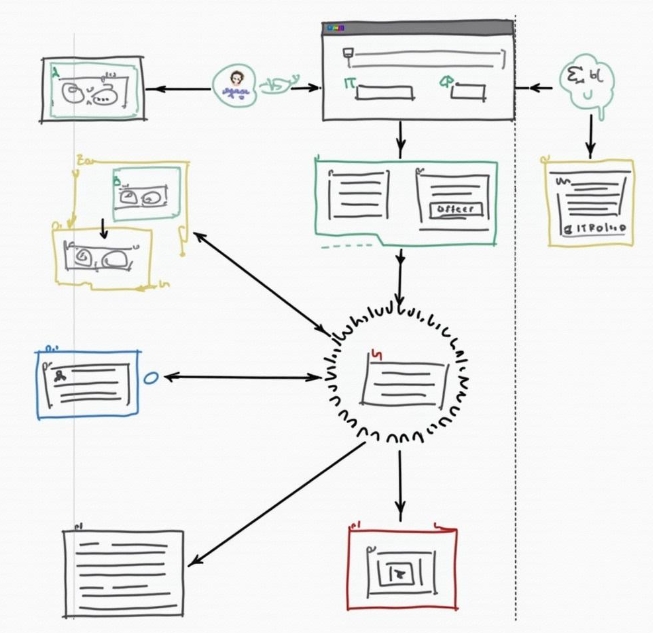Version Management and Update Strategies in Mini-Program Development
- latest articles
- 1.DApp Development & Customization: Merging Diverse Market Needs with User Experience 2.Analysis of the Core Technical System in DApp Project Development 3.How to achieve cross-chain interoperability in Web3 projects? 4.How does the tokenization of points reconstruct the e-commerce ecosystem? 5.How to Set and Track Data Metrics for a Points Mall? 6.What is DApp Development? Core Concepts and Technical Analysis 7.Inventory of commonly used Web3 development tools and usage tips 8.Development of a Distribution System Integrated with Social E-commerce 9.Six Key Steps for Businesses to Build a Points Mall System 10.What is DApp Development? A Comprehensive Guide from Concept to Implementation
- Popular Articles
- 1.Future Trends and Technology Predictions for APP Development in 2025 2.Analysis of the DeFi Ecosystem: How Developers Can Participate in Decentralized Finance Innovation 3.From Zero to One: How PI Mall Revolutionizes the Traditional E-commerce Model 4.DAPP Development | Best Practices for Professional Customization and Rapid Launch 5.Recommended by the Web3 developer community: the most noteworthy forums and resources 6.From Cloud Computing to Computing Power Leasing: Building a Flexible and Scalable Computing Resource Platform 7.How to Develop a Successful Douyin Mini Program: Technical Architecture and Best Practices 8.Shared Bike System APP: The Convenient Choice in the Era of Smart Travel 9.How to Create a Successful Dating App: From Needs Analysis to User Experience Design 10.From Design to Development: The Complete Process of Bringing an APP Idea to Life
In the process of mini-program development, version management and update strategies are key factors in ensuring the stability of mini-program functionality, a smooth user experience, and maintaining efficient development progress. With the continuous development of mini-programs, especially in the context of the popularity of WeChat mini-programs, how to reasonably manage versions and updates has become an important challenge for development teams. This article will explore version management methods in mini-program development, common version update strategies, and how to ensure the stability and continuous improvement of mini-programs through effective strategies.
I. The Necessity of Mini-Program Version Management
Version management refers to the reasonable identification, storage, and management of code, configurations, resource files, etc., for different versions during the mini-program development process, enabling the development team to backtrack, update, or fix issues at any time. As the project progresses, iterative updates across multiple versions form a complex version system, making the role of version management increasingly prominent. Specifically, the necessity of version management is mainly reflected in the following aspects:
1. Code and Function Traceability
Each version of a mini-program corresponds to a specific set of functions and code implementations. As versions are updated, functions are continuously enhanced or optimized. Version management helps developers trace back to the functions and implementation methods of a specific version, facilitating code debugging and error fixing.
2. Team Collaboration and Communication
Version management plays a crucial role in team collaboration. In a multi-developer environment, where different developers are responsible for different modules and functions, a unified version management system can prevent code conflicts, redundant work, and functional failures, ensuring efficient and smooth collaboration among team members.
3. Ensuring Mini-Program Stability
Each updated version may introduce new features while potentially bringing new issues. Through strict version management, it is ensured that the mini-program undergoes sufficient testing and validation before releasing a new version, avoiding disruptions to normal user usage.
4. User Experience and Data Monitoring
Version management is not limited to code management but also involves changes in configurations, resources, interfaces, etc. Through effective version management strategies, versions can be rolled back promptly to fix issues that may affect the user experience. Meanwhile, reasonable update strategies help the development team obtain more accurate information in data analysis and monitoring.

II. Best Practices for Mini-Program Version Management
In the process of mini-program development, there are various methods for version management, and suitable management approaches can be chosen based on the project's scale and complexity. Common mini-program version management methods include Git management, branch management, and tag management.
1. Using Git for Version Management
Git is currently the most commonly used version control system, helping development teams effectively manage various versions of code. In mini-program development, the use of Git can significantly improve code management efficiency and avoid version conflicts. Through Git, developers can perform branch management and merge operations, ensuring unnecessary conflicts do not arise during multi-person collaboration.
Git Operation Steps:
Initialize Git Repository: Use the command
git initto initialize a new Git repository.Create Branches: During development, different branches are typically created based on features to ensure the stability of the main branch (usually master or main).
Commit Changes: Use the
git commitcommand to commit code changes, with each commit accompanied by a clear description for future traceability and review.Merge Branches: After completing the development of a feature, use
git mergeto merge the branch into the main branch, ensuring the new feature is successfully deployed.
2. Rational Use of Branch Management
For large-scale mini-program development projects, branch management is particularly important. Branch management not only effectively controls the independent development of various features but also ensures the stability of the main codebase. Common branch management models include the following:
Main Branch (master or main): The main branch is the official version of the mini-program, and only rigorously tested code can be merged into this branch.
Development Branch (dev): The development branch is used for daily development work, where all new feature developments take place.
Feature Branch (feature): For each feature developed, a new feature branch can be created and merged back into the development branch upon completion.
Release Branch (release): Before releasing a new version, a release branch is created for final testing and fixes.
Through branch management, developers can more clearly delineate different development tasks, ensuring that the code for each version is thoroughly validated and avoiding unstable code from affecting the user experience.
3. Using Tags for Version Identification
Tags in Git are a way to identify versions. By using tags, developers can clearly mark each version's release point. Generally, tags are used to identify release versions, such as v1.0, v2.0, etc. Using tags for version identification not only makes it easy for team members to view the current release version but also provides convenience when backtracking to historical versions.

III. Formulating Mini-Program Update Strategies
Reasonable update strategies are crucial for the long-term operation of mini-programs. Updates are not just about pushing new features or fixing bugs but also involve balancing feature updates with user experience. Next, we will explore common mini-program update strategies.
1. Rolling Updates and Canary Releases
Rolling updates and canary releases are commonly used update strategies. Rolling updates refer to gradually pushing the new version to different users, eventually covering all users. Canary releases involve pushing the new version only to a specified group of users for testing, collecting feedback before deciding on a full release.
Benefits of Canary Releases:
Risk Reduction: New versions may contain unknown issues; canary releases can reduce the risk of a full rollout.
Feedback Collection: Through canary releases, developers can promptly collect user feedback, identify potential issues, and make fixes.
Data Monitoring: During the canary release period, user behavior data can be monitored to determine if the new version's performance meets expectations.
2. Forced Updates and Flexible Updates
When updating mini-programs, development teams can choose to adopt forced updates or flexible update strategies. Forced updates are typically used when there are significant changes in functionality or security, requiring users to update to the new version to continue using the mini-program. Flexible updates, on the other hand, provide users with update prompts, allowing them to choose whether to update.
Forced Updates: Ensure all users use the latest version in the shortest time, reducing compatibility issues, but may impact the user experience.
Flexible Updates: Give users more freedom, avoiding the negative emotions associated with forced updates, but may result in some users not updating for a long time, leading to version discrepancies.
3. Multi-Version Compatibility
In certain situations, mini-programs may need to support multiple versions running in parallel. For example, significant feature upgrades might affect user habits; in such cases, multi-version compatibility can ensure a smooth transition for users to the new version.
IV. Summary and Outlook
Version management and update strategies for mini-programs are essential means to ensure development efficiency and improve product quality. Through reasonable version management methods, developers can ensure code stability and avoid functional conflicts and version chaos. Meanwhile, scientific update strategies can ensure that mini-programs maintain a stable user experience while continuously innovating.
-

How to Increase User Stickiness and Activity Through Mini Program Development
With the development of the internet and mobile internet, mini-programs, as an e···
-

How can mini-program development assist in corporate marketing and e-commerce transformation?
In today's rapidly evolving mobile internet landscape, corporate marketing and e···
-

Offline Functionality Design and Data Synchronization in Mini-Program Development
With the rapid development of mobile internet, mini-programs, as a lightweight a···

 Blockchain
Blockchain










